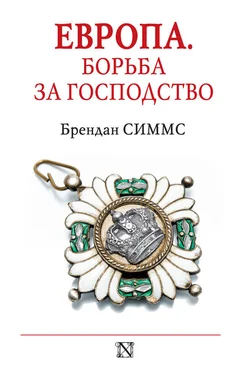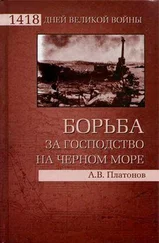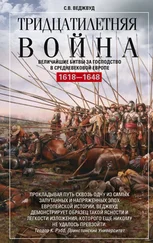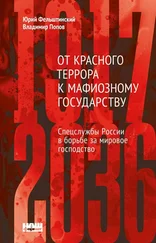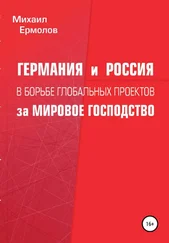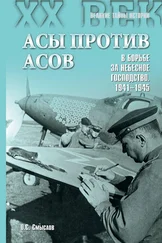Thomas J. Christensen, Useful adversaries. Grand strategy, domestic mobilization, and Sino-American con ict, 1947–1958 (Princeton, 1996).
William B. Pickett, Eisenhower decides to run. Presidential politics and Cold War strategy (Chicago, 2000), pp. 213–15 (quotation p. 182).
Steven Casey, Selling the Korean War. Propaganda, politics and public opinion in the United States, 1950–1953 (New York, 2008), p. 251.
Kramer, ‘Early post – Stalin succession struggle’, pp. 3–55. (Крамер, как мне кажется, уделяет слишком мало внимания внешней политике, хотя данные, им собранные, указывают на обратное.) Также: Jeremy Smith and Melanie Ilic (eds.), Khrushchev in the Kremlin. Policy and government in the Soviet Union, 1953–1964 (London and New York, 2011).
Hubert Zimmermann, ‘The sour fruits of victory: sterling and security in Anglo-German relations during the 1950s and 1960s’, Contemporary European History, 9, 2 (2000), pp. 225–43.
Geoffrey Owen, From Empire to Europe. The decline and revival of British industry since the Second World War (London, 1999), pp. 30–56 and passim.
Lawrence Black, ‘“The bitterest enemies of communism”: Labour revisionists, Atlanticism and the Cold War’, Contemporary British History, 15, 3 (2001), pp. 26–62, especially pp. 27–8.
ibid., p. 34.
Martin Ceadel, ‘British parties and the European situation, 1952–1957’, in Ennio di Nolfo (ed.), Power in Europe? II. Great Britain, France, Germany and Italy and the origins of the EEC, 1952–1957 (Berlin and New York, 1992), pp. 309–32.
John Lewis Gaddis, The United States and the end of the Cold War. Implications, reconsiderations, provocations (Oxford, 1992), p. 73.
László Borhi, ‘Rollback, liberation, containment or inaction? U. S. policy and Eastern Europe in the 1950s’, Journal of Cold War Studies, 1, 3 (1999), pp. 67–110 (quotations p. 68).
Ian Johnson, A mosque in Munich. Nazis, the CIA, and the rise of the Muslim Brotherhood in the west (New York, 2010).
Evin Ruane, ‘Agonizing reappraisals: Anthony Eden, John Foster Dulles and the crisis of European defence, 1953–54’, Diplomacy and Statecraft, 13, 4 (2002), pp. 151–85 (quotations pp. 151, 153, 156–7 and 172).
Arnold Kanter, ‘The European Defense Community in the French National Assembly: a roll call analysis’, Comparative Politics, 2, 2 (1970), pp. 206, 212 and passim.
Anne Deighton, ‘The last piece of the jigsaw: Britain and the creation of the western European Union, 1954’, Contemporary European History, 7, 2 (1998), pp. 181–96.
Martin Schaad, ‘Plan G – a “counterblast”? British policy towards the Messina countries, 1956’, Contemporary European History 7, 1 (1998), pp. 39–60, passim (quotation p. 46).
Lafeber, America, Russia and the Cold War, p. 178.
Dieter Krüger, Sicherheit durch Integration? Die wirtschaftliche und politische Integration Westeuropas 1947 bis 1957/58 (Oldenbourg, 2003), p. 514 and passim.
William Glenn Gray, Germany’s Cold War. The global campaign to isolate East Germany, 1949–1969 (Chapel Hill and London, 2003).
Sergei N. Khrushchev, Nikita Khrushchev and the creation of a superpower (University Park, Pa, 2000), p. 63.
Ira Chernus, Apocalypse management. Eisenhower and the discourse of national insecurity (Stanford, 2008), p. 141.
Mohamed Heikal, Sphinx and commissar. The rise and fall of Soviet in uence in the Arab world (London, 1978), p. 65.
Robert W. Heywood, ‘West European Community and the Eurafrica concept in the 1950s’, Journal of European Integration, 4, 2 (1981), pp. 199–210.
Ralph Dietl, ‘Suez 1956: a European intervention?’, Journal of Contemporary History, 43, 2 (2008), pp. 259–78 (quotation p. 261).
John C. Campbell, ‘The Soviet Union, the United States, and the twin crises of Hungary and Suez’, in William Roger Louis and Roger Owen (eds.), Suez 1956. The crisis and its consequences (Oxford, 1989), pp. 233–53.
Simon C. Smith (ed.), Reassessing Suez 1956. New perspectives on the crisis and its aftermath (London, 2008).
Diane B. Kunz, The economic diplomacy of the Suez crisis (Chapel Hill and London, 1991), especially pp. 113–14 and 192–3.
W. R. Louis, ‘Public enemy number one: the British Empire in the dock at the United Nations, 1957–1971’, in Martin Lynn (ed.), The British Empire in the 1950s. Retreat or revival? (Basingstoke, 2006).
Kenneth O. Morgan, Britain since 1945. The people’s peace (Oxford, 1990), p. 158.
Schaad, ‘Plan G – a “counterblast”?’, p. 50.
Yinghong Cheng, ‘Beyond Moscow-centric interpretation: an examination of the China connection in eastern Europe and North Vietnam during the era of de-Stalinisation’, Journal of World History, 15, 4 (2004), pp. 487–518, especially pp. 489, 492–3 and 496 (quotation p. 489).
Martin Thomas, The French North African crisis. Colonial break-down and Anglo-French relations, 1945–1962 (Basingstoke, 2000).
Vladislav Zubok, Khrushchev and the Berlin crisis (1958–1962), Cold War International History Project, Working Paper No. 6 (Washington, DC, 1993), p. 8. For the centrality of Germany to Khrushchev see p. 3.
Nicholas Thompson, The hawk and the dove. Paul Nitze, George Kennan and the history of the Cold War (New York, 2009), p. 175.
Richard Immerman, John Foster Dulles. Piety, pragmatism, and power in U. S. foreign policy (Wilmington, 1999), p. 188.
Andrea Benvenuti, Anglo-Australian relations and the turn to Europe, 1961–1972 (Woodbridge, 2008), pp. 26–41.
Frank A. Mayer, Adenauer and Kennedy. A study in German American relations, 1961–1963 (Basingstoke, 1996), p. 96.
Mark Moyar, Triumph forsaken. The Vietnam War, 1954–1965 (Cambridge, 2006).
Lawrence Freedman, Kennedy’s wars. Berlin, Cuba, Laos and Vietnam (Oxford, 2000).
David Kaiser, ‘Men and policies’, in Diane B. Kunz (ed.), The diplomacy of the crucial decade (New York, 1994), pp. 11–41, especially pp. 23–9.
Höhn and Klimke, A breath of freedom, p. 95.
Zubok, Khrushchev and the Berlin crisis, p. 25.
Gordon S. Barrass, The Great Cold War. A journey through the hall of mirrors (Stanford, 2009), p. 131.
Читать дальше
Конец ознакомительного отрывка
Купить книгу
